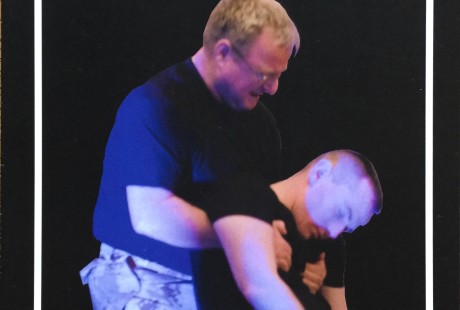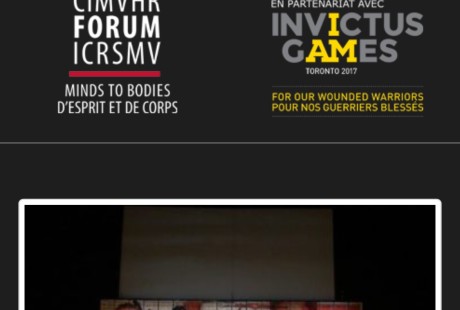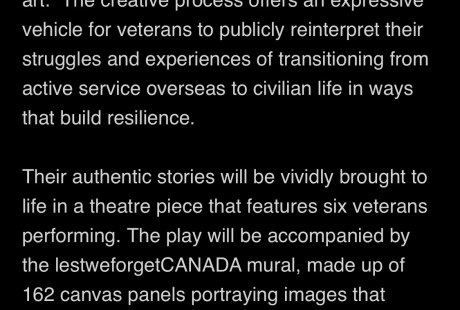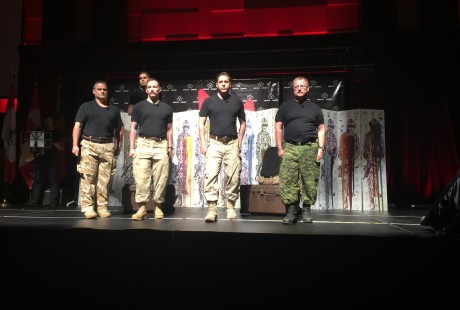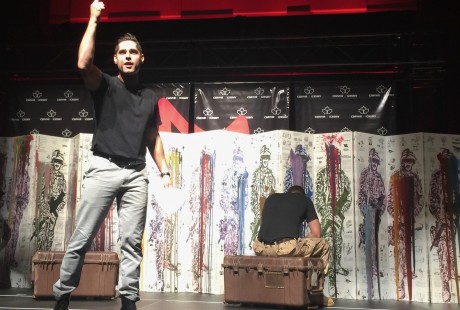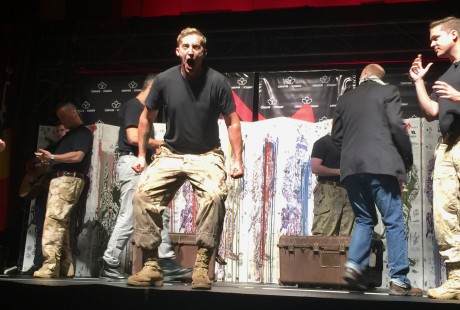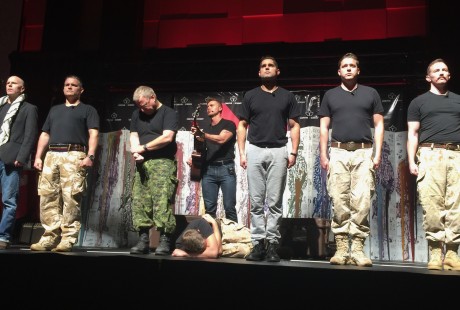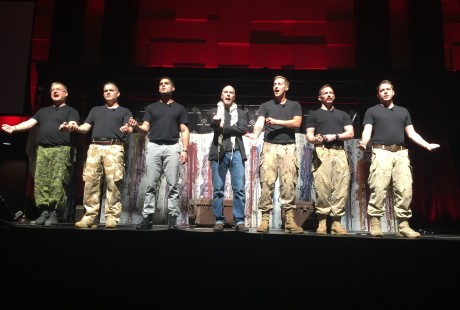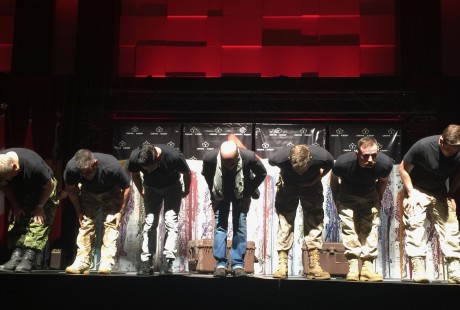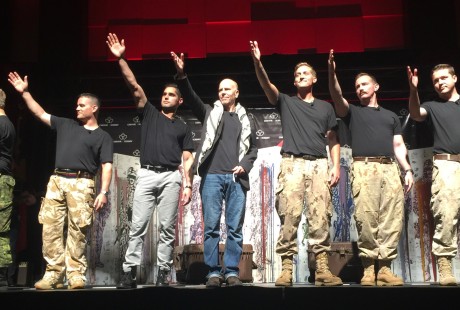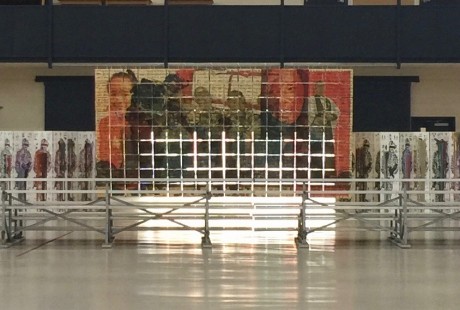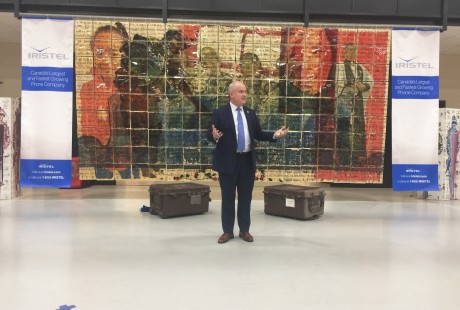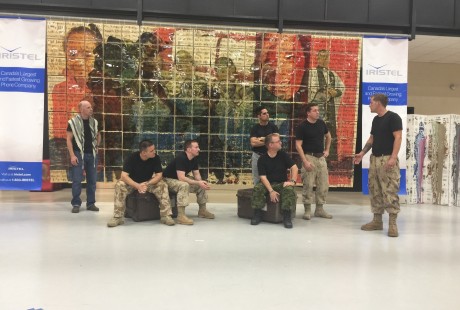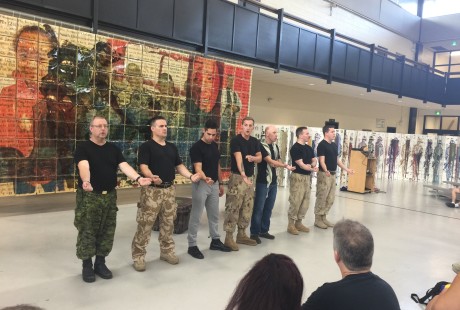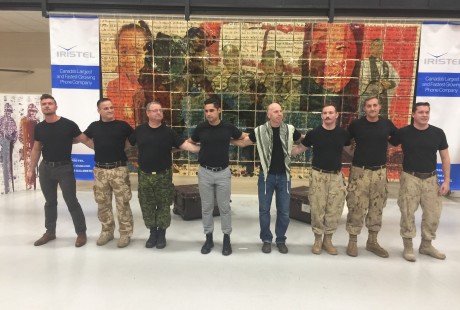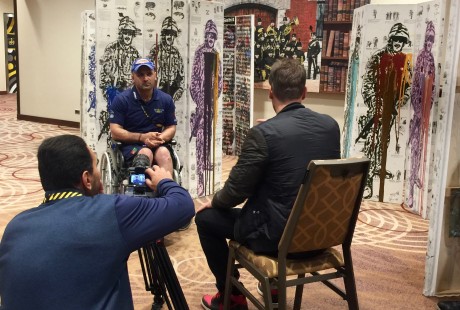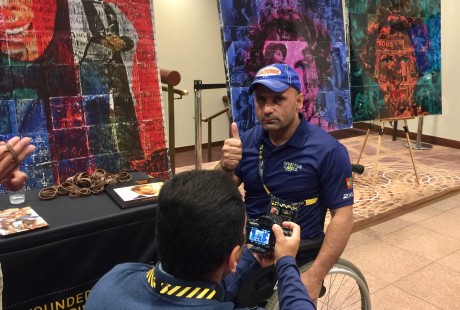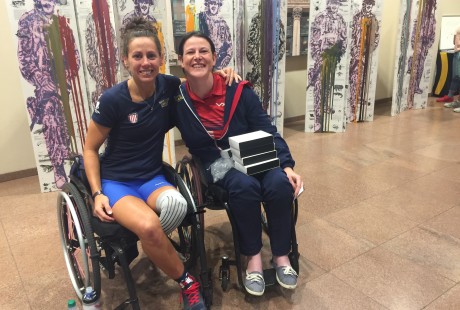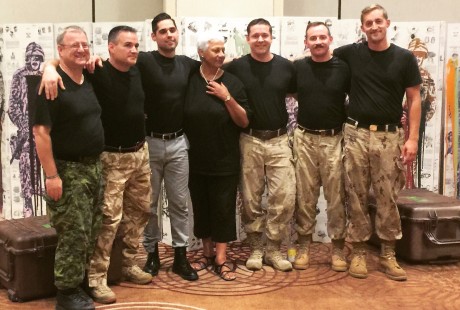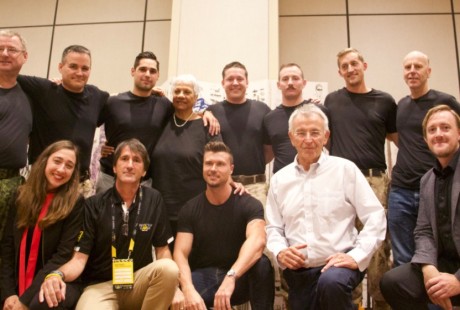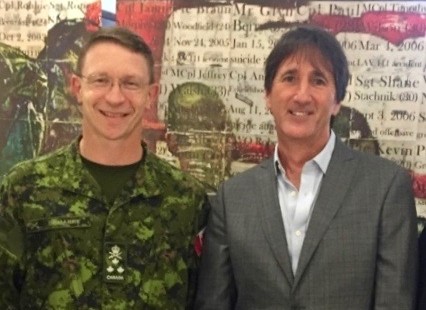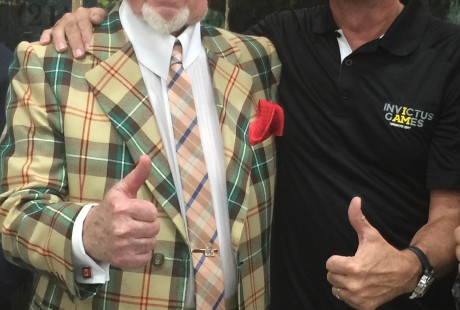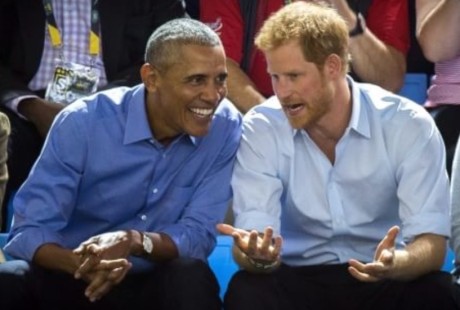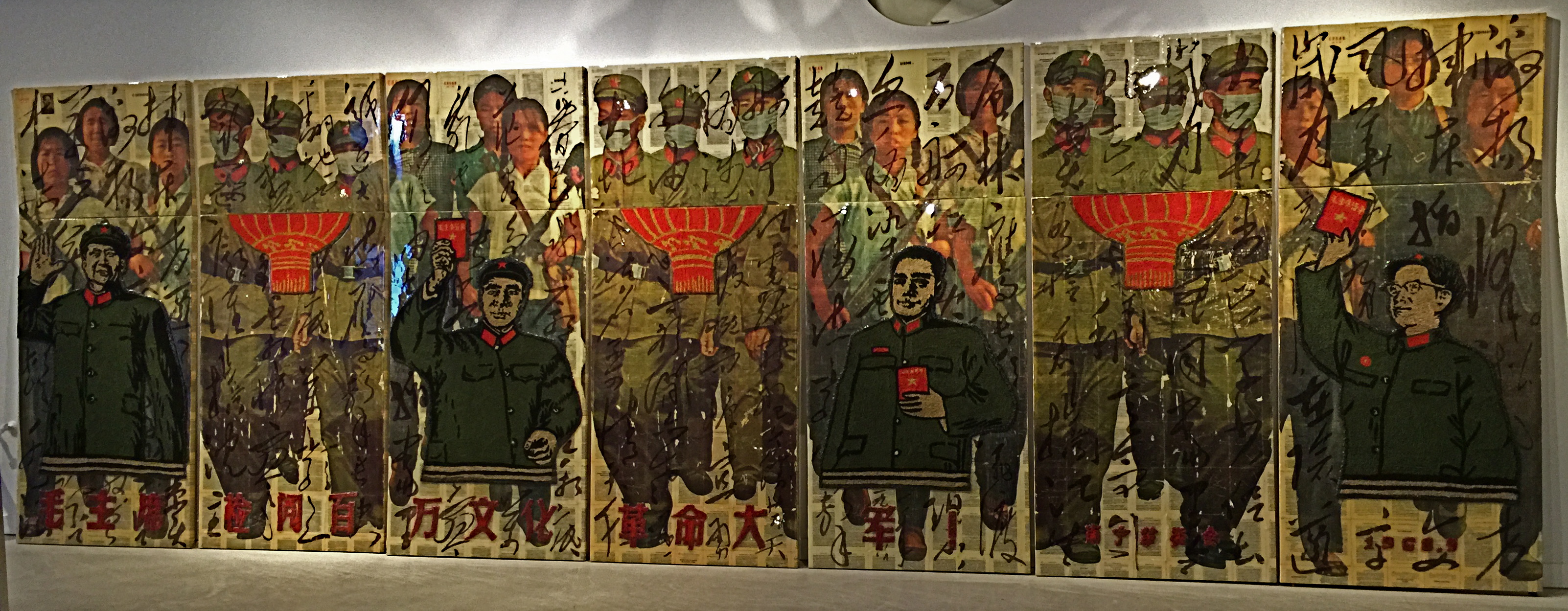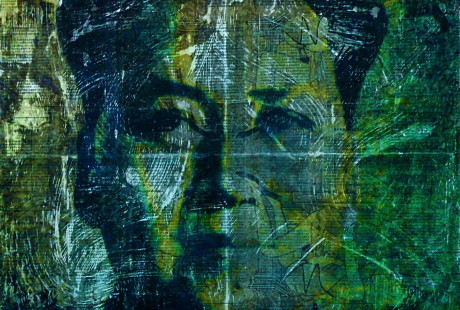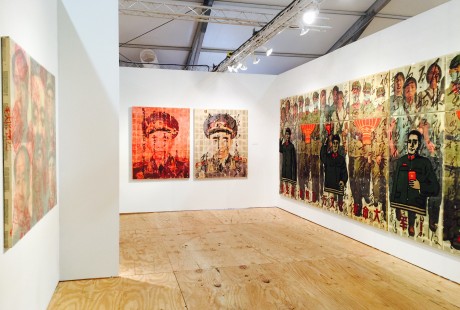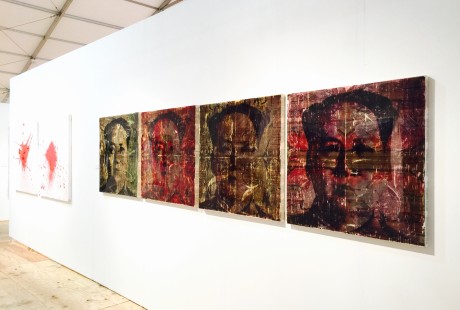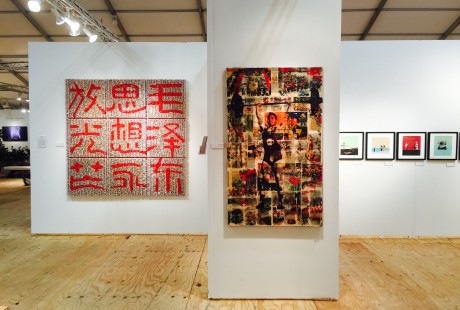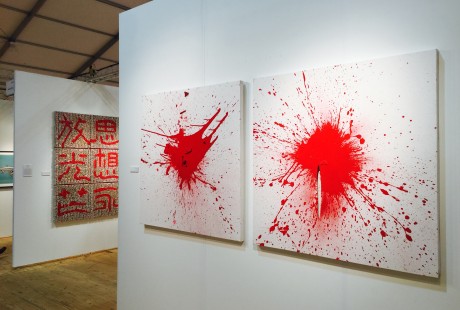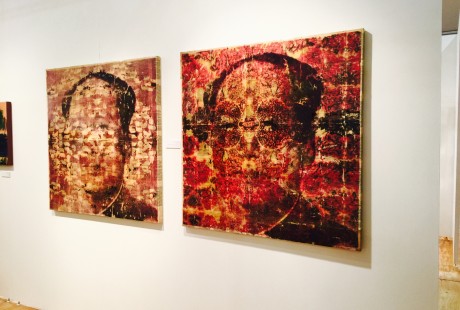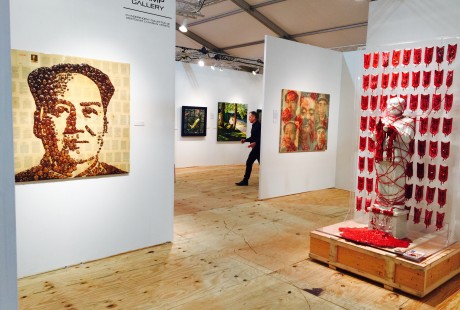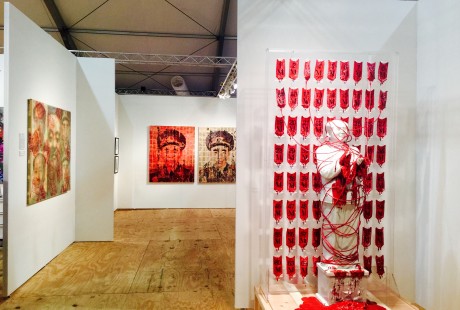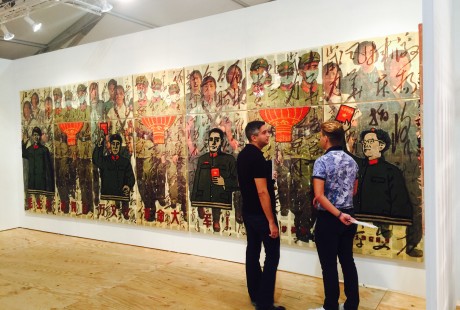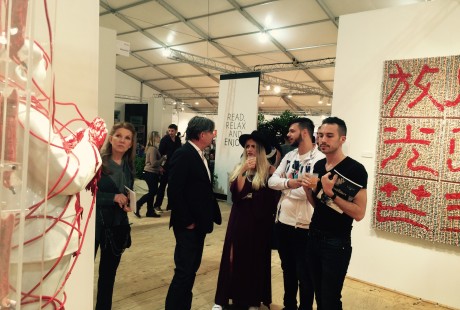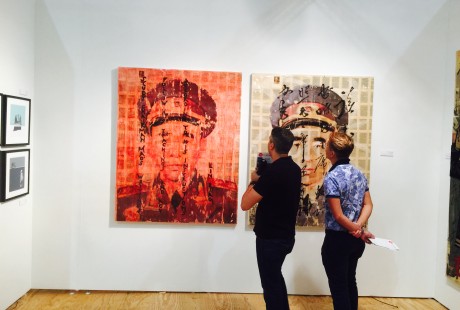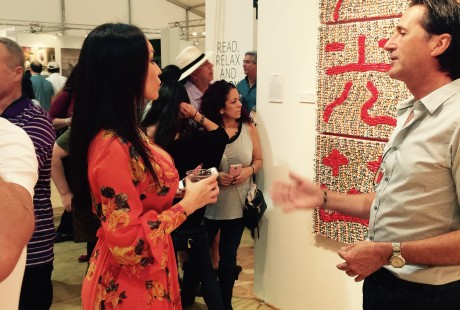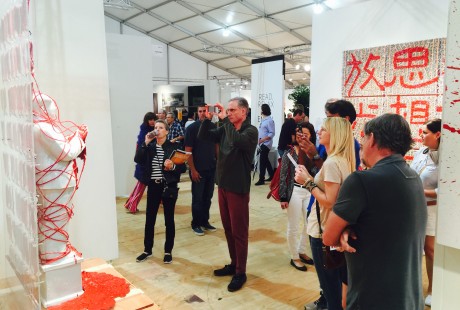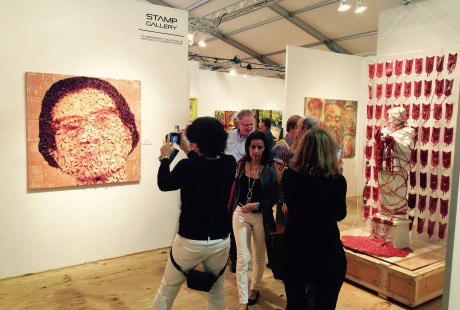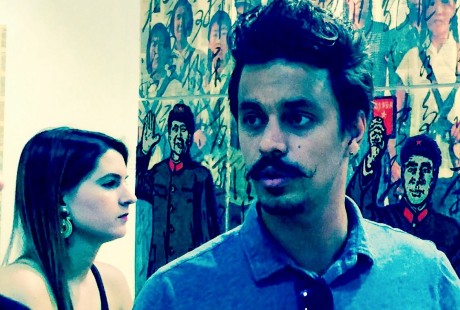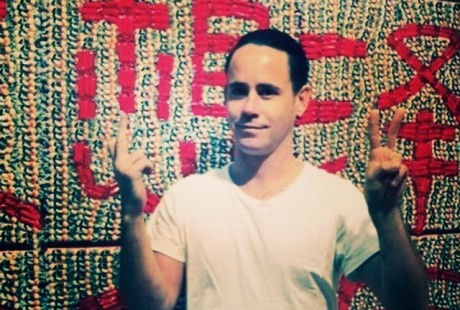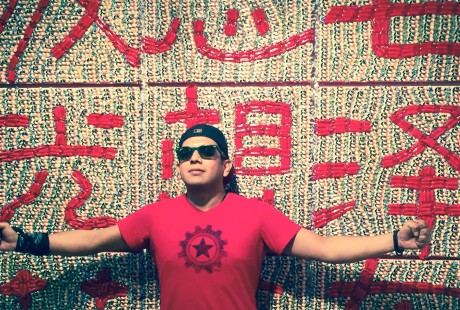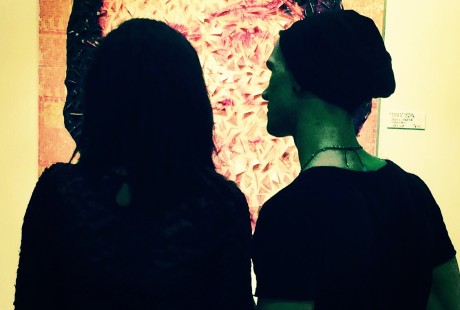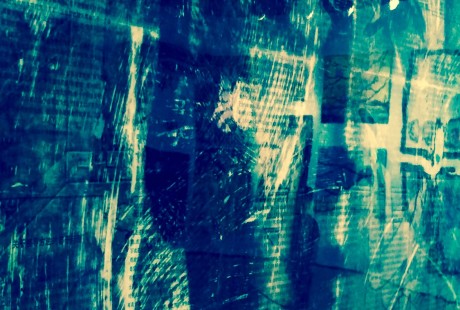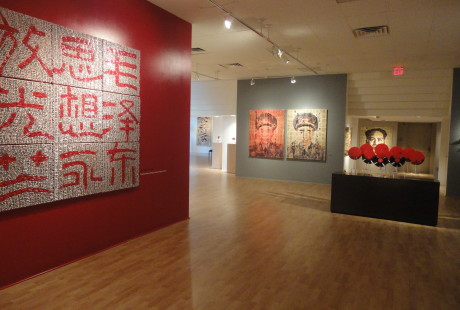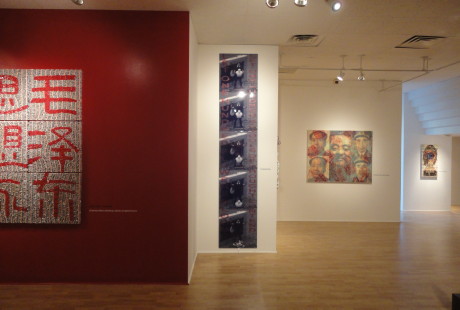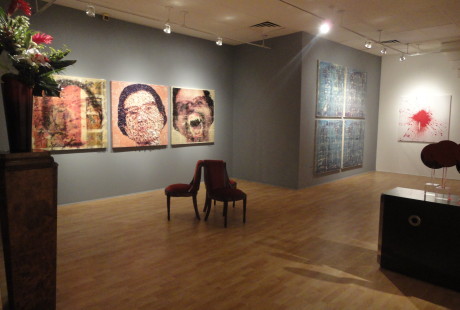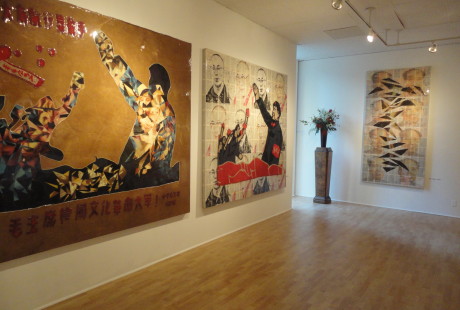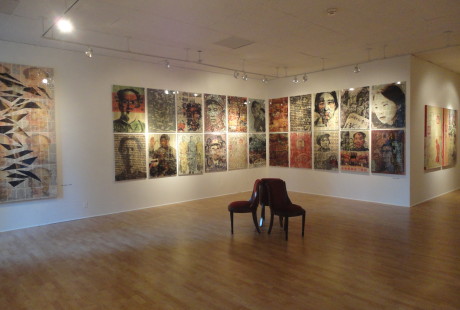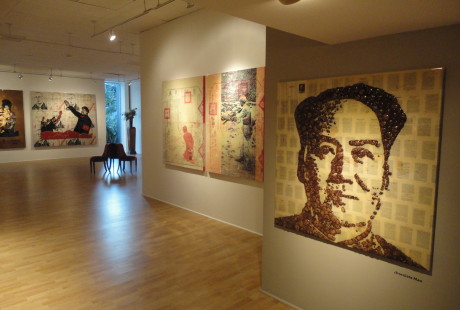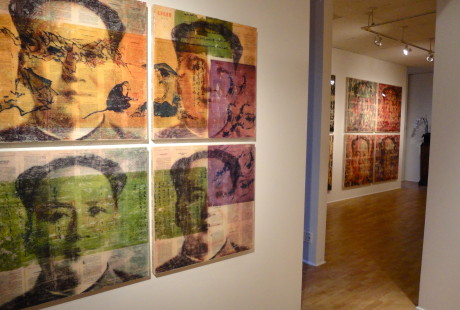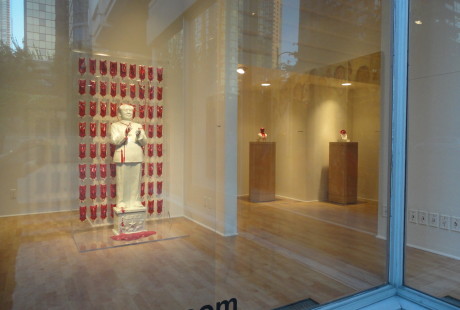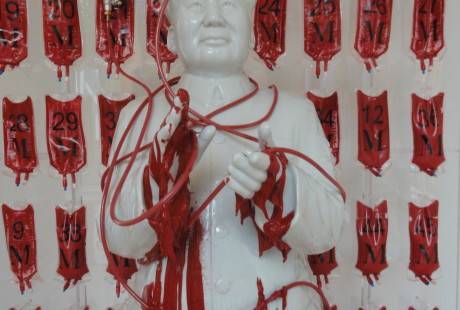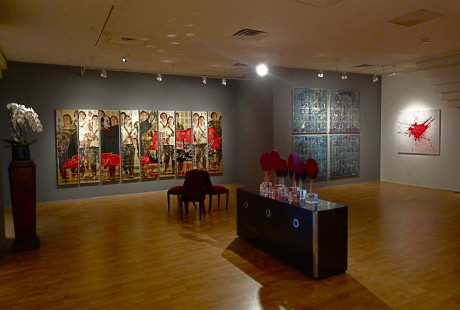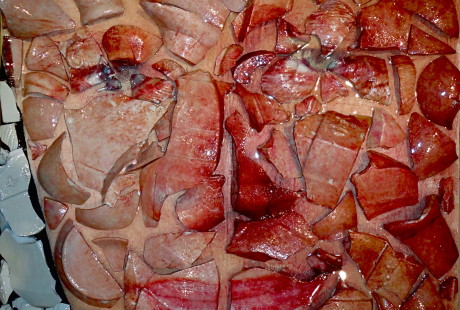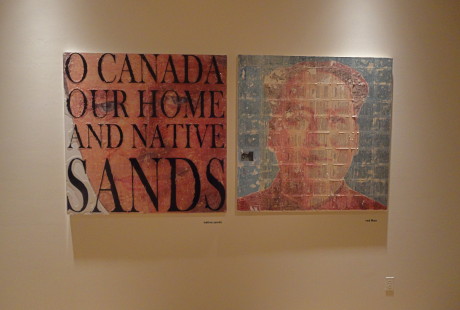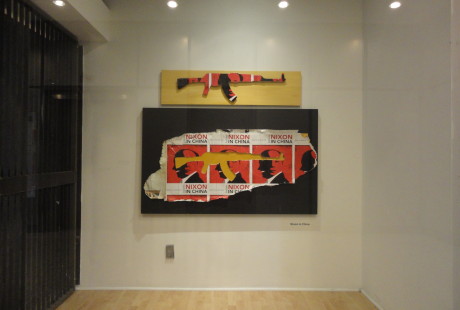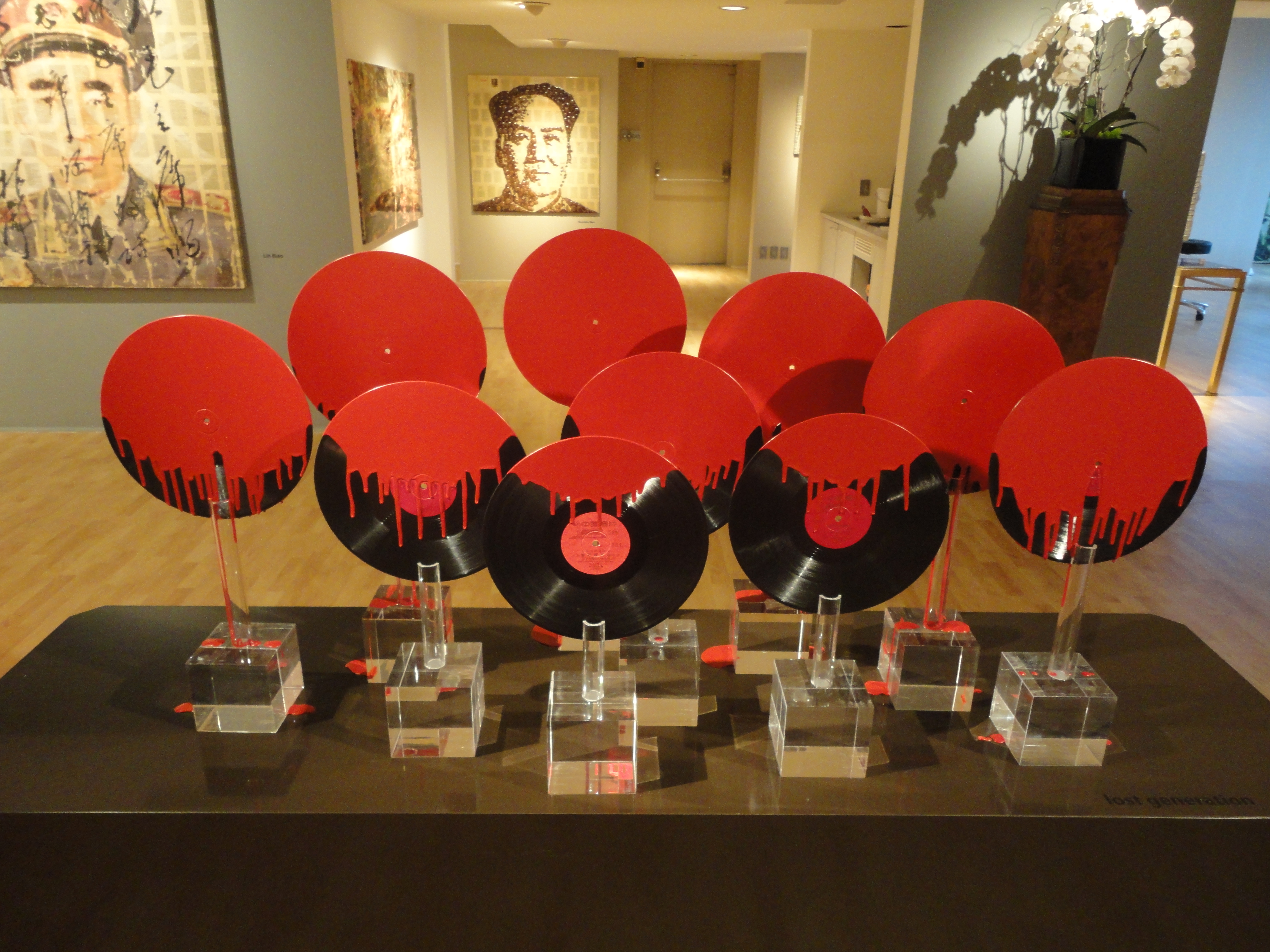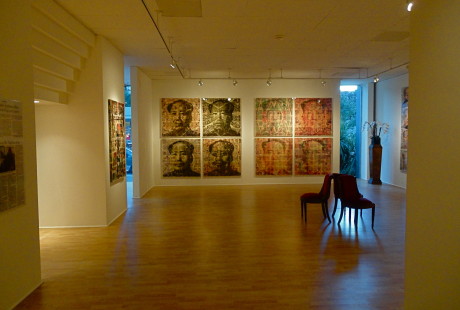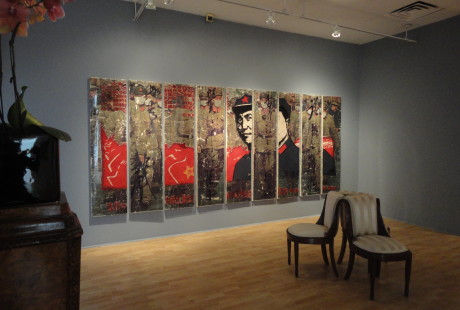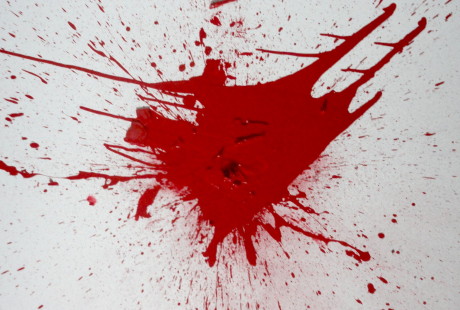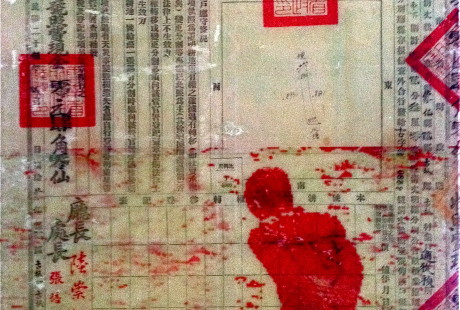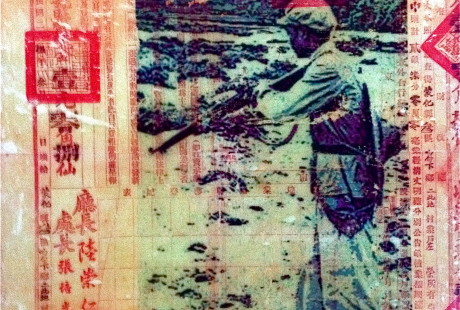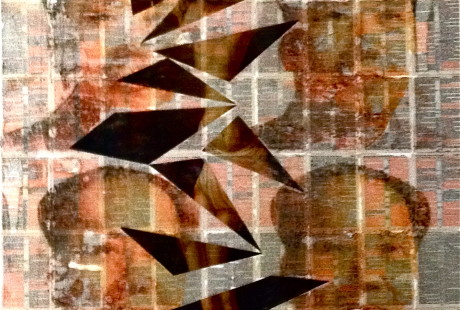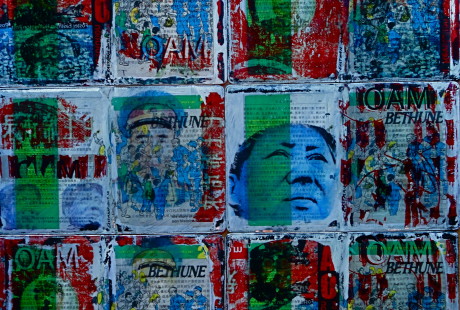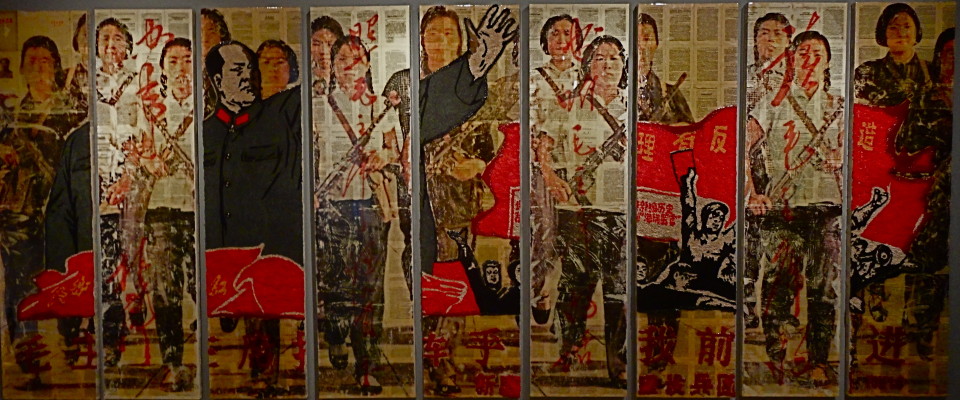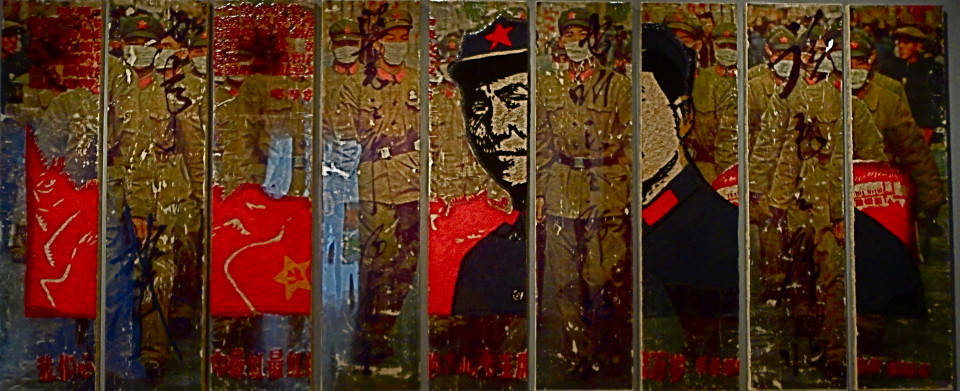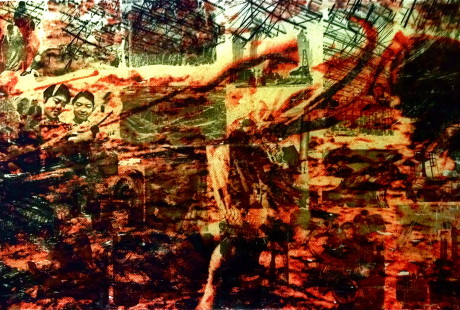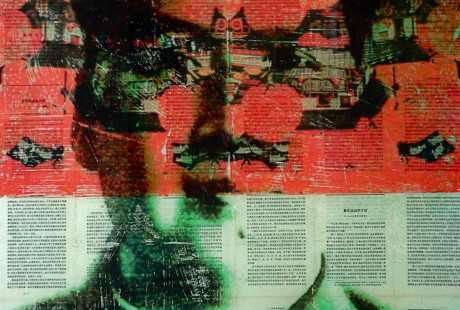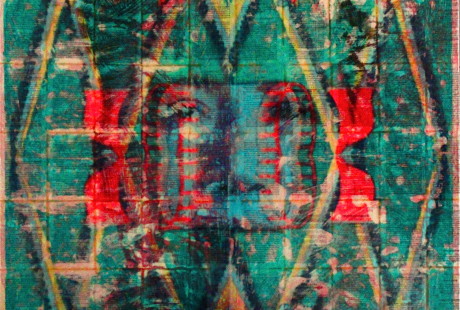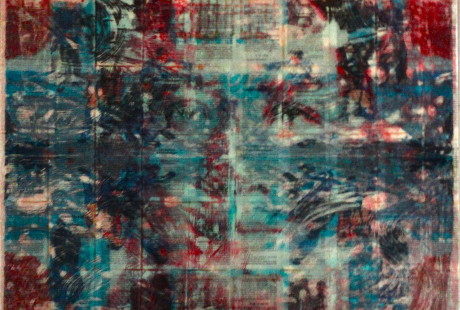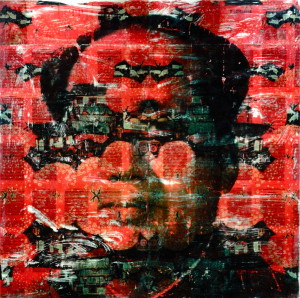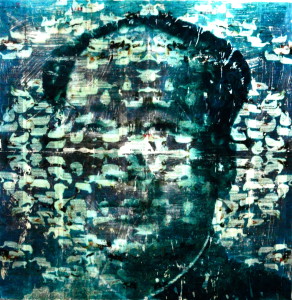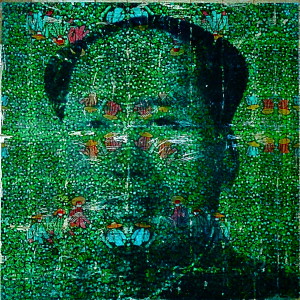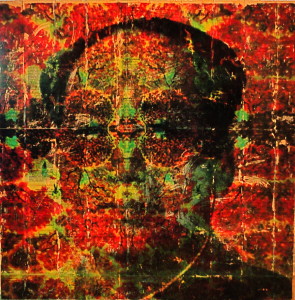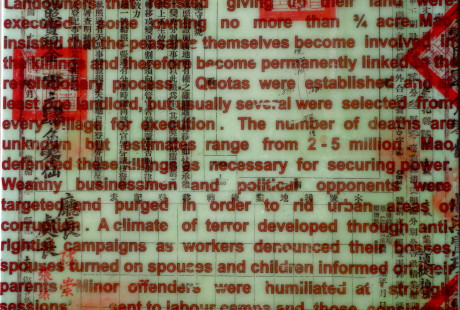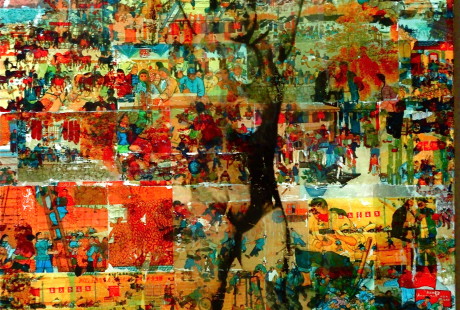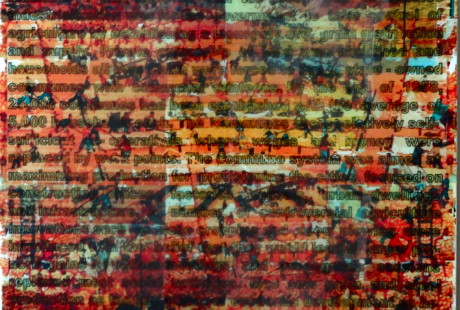The Great Leap Forward
MAO : The Great Leap Forward:Weight Lifter
On 23, Nov 2015 | In b) MAO works | By foster eastman
The image of the weightlifter is transferred onto 2 image transfers of peasant paintings from the 1960s. This represents citizens working together to build a strong China. However, during this period, 30 million Chinese citizens died of starvation.
Mao Tse-tung
On 23, Nov 2015 | In c) MAO book of | By foster eastman
Mao Tse-tung (1893-1976) was a Chinese Communist revolutionary, guerrilla warfare strategist, anti-imperialist, political philosopher and leader of the Chinese Revolution. He was the architect and founding father of the People’s Republic of China established in 1949 after defeating Chiang Kai-shek’s Nationalist government during the Chinese Civil War. Mao enacted sweeping land reforms by using violence and terror to overthrow the feudal landlords and warlords. National campaigns for rapid industrialization such as the Great Leap Forward resulted in severe starvation. Anti-rightist movements and struggle sessions led to humiliation, beatings, suicides and executions. The Cultural Revolution damaged the historical culture of China by destroying ancient relics and religious sites in an effort to modernize the consciousness of the nation. Under Mao’s leadership positive changes included promoting the status of women by abolishing foot binding, arranged marriages, polygamy and allowing women to divorce. Literacy improved from 20% to 93% and life expectancy rose from 35 to 55 increasing China’s population dramatically. Corruption was wiped out and the restructuring of feudal and Confucius ideologies ensured China’s sovereignty and status as a major power on the international stage. Mao is credited for laying a foundation for China’s continued development and was named one of the 100 most influential people of the 20th century by Time Magazine. While his rule is believed to have caused the deaths of 40-70 million people, he remains a controversial figure with a contentious legacy that is subject to revision and fierce debate.
- Mao Tse-tung
The Great Leap Forward
On 23, Nov 2015 | In c) MAO book of | By foster eastman
The Great Leap Forward ended (January 1961) after 3 years in catastrophe as its foundation was dependant on coercion, terror and systematic violence. Peasants who had received property through land reforms were unwilling to hand over their plots to the state. The ban on private holdings ruined peasant life as villagers were unable to secure enough food to survive. People were herded into fields and worked intolerable hours. Local customs such as funerals, weddings, markets and festivals were deemed as signs of feudalism and were banned. Failure to participate in political campaigns would result in detention, torture, the suffering of entire families and death. Public criticism or ‘struggle’ sessions were often used to intimidate peasants to obey the local cadres. Crop yields were dramatically reduced due to the new planting techniques and the amount of labour diverted to producing low quality steel called pig iron. Under tremendous pressure local officials falsely reported record harvests, which were then used as a basis to determine the amount of grain taken to supply the cities and for export. Most of the grain was exported to the Soviet Union in order to pay for debts incurred during the revolution and to pay for weapon technology… including the atomic bomb. Foreign aid was refused as Mao sought to maintain face and convince the outside world of the success of his plans… even exporting grains to Africa and Cuba. In 1959 and 1960 the weather was less favourable and the situation got considerably worse. There is disagreement over how much weather conditions contributed to the famine and how much was intentional or due to willful negligence. An estimated 18-40 million citizens starved to death, 2.5 million were beaten or tortured to death, 1-3 million committed suicide and The Great Leap Forward became one of the deadliest famines in history.
land reform
On 23, Nov 2015 | In c) MAO book of | By foster eastman
Land Reform was the major focus of policy and the foundation of the People’s Republic of China. This policy won the party millions of supporters among the peasantry as 90% of the population were farmers. Property of landlords was expropriated by the government and redistributed to the lower class peasants so that each household would receive a comparable holding. Landowners that resisted giving up their land were executed… some owning no more than ¾ acre. Mao insisted that the peasants themselves become involved in the killings and therefore become permanently linked to the revolutionary process. Quotas were established and at least one landlord, but usually several were selected from every village for execution. The number of deaths are unknown but estimates range from 2-5 million. Mao defended these killings as necessary for securing power. Wealthy businessmen and political opponents were targeted and purged in order to rid urban areas of corruption. A climate of terror developed through anti-rightist campaigns as workers denounced their bosses, spouses turned on spouses and children informed on their parents. Minor offenders were humiliated at ‘struggle sessions’, sent to labour camps and those considered major offenders were executed. Many committed suicide. A second Land Reform occurred in 1958 when ownership was eliminated during The Great Leap Forward and peasants were only given usage rights to land. Land was confiscated and became the property of the state. Peasants were organized into teams and collectives becoming property-less members of ‘peoples communes’.
The Great Leap Forward : Weight Lifter
On 23, Nov 2015 | In c) MAO book of | By foster eastman
The Great Leap Forward was a 5-year economic and social plan led by Mao Tse-tung in 1958, which aimed to use China’s vast population to rapidly transform the country from an agrarian economy into a modern communist society through the process of rapid industrialization and collectivization. The hope was to industrialize by making use of the massive supply of cheap labour and avoid having to import heavy machinery. Mao believed that the best way to finance industrialization was for the government to take control of agriculture by establishing a monopoly over grain distribution and supply. Private ownership of land was abolished and households all over China were forced to live in state-owned communes with communal canteens. By the end of 1958, 25,000 communes had been established with the average of 5,000 households each. The communes were relatively self-sufficient co-operatives where wages and money were replaced by work points. The commune system was aimed at maximizing production for provisioning the cities focused on constructing offices, factories, schools, urban dwellings and infrastructure. A number of controversial agriculture innovations such as close cropping and deep plowing were introduced with the belief that they would lead to larger per-acre gains. Political meetings and propaganda sessions replaced most social activities. Mao saw grain and steel production as the key pillars of economic development so he encouraged the establishment of small backyard steel furnaces in every commune and urban neighbourhood. Huge efforts were made by peasants and workers to produce steel out of scrap metal. Thousands of large-scale state projects including mass mobilization on irrigation works were initiated requiring huge investments in technology. Engineers and skilled technicians from the Soviet Union came to help train the youth.

